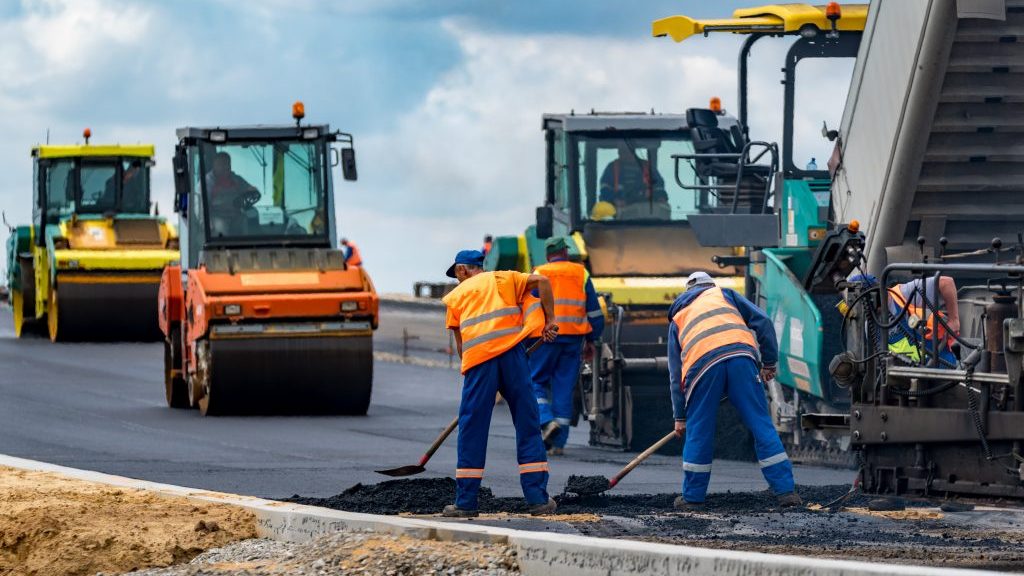After almost five years of work, a special volunteer task group believes it has laid the foundation for performance-based asphalt testing which will improve pavement durability in Ontario and, in the process, improve overall road performance.
In the long run, that means savings for the taxpayers, says Sina Varamini, chair of the Ontario Asphalt Expert Task Group (OAETG).
Comprised of approximately 25 members from a wide swath of the asphalt industry, owners and academia, its mission is to advocate for improved asphalt pavement performance in the province.
Although supported by the Ontario Road Builders’ Association (ORBA) and the Ontario Asphalt Pavement Council (OAPC) the task group is an independent body, says Varamini.
At OAPC’s recent fall seminar in Mississauga, he told the participants there is a need to “bridge the knowledge gap” in performance testing and methods.

In an interview after the seminar, he said the task group’s five year-year vision plan “is about 90 per cent complete.”
Among its chief findings is that there is a need for greater consistency in laboratory testing procedures and that the Ministry of Transportation and other agencies must collaborate with the asphalt industry in achieving the consistency.
It is also calling for the creation of a hands-on certified technician training program which could be delivered by the ORBA’s roadbuilding academy and certified by the Canadian Council of Independent Laboratories.
The group is driven by an understanding that asphalt pavement performance is not solely about materials, but also about ensuring long-term durability and quality “through robust testing methods and strategic planning,” he points out.
Since its inception in 2020, the task group has been working with industry members and a number of independent third-party laboratories on a series of performance tests to evaluate the physical properties and performance of asphalt.
These tests were conducted in a series of rounds or sessions that involved different test procedures and mixtures, with the participating laboratories increasing as the research transitioned from one round to the next.
Also taken into account were Ontario’s three climatic different zones, but with an emphasis on southern Ontario, with its dense population and heavily used roads.
Other research work included reaching out to international experts on an information exchange basis. A major discovery in that endeavour was that many agencies worldwide are not yet ready to fully adopt performance-based testing due “to equipment limitations, lack of standardized procedures and concerns about costs,” said Varamini.
The catalyst for OAETG’s formation was the OAPC-sponsored 2019 launch of the Asphalt Technical Symposium.
This is an annual event where a broad cross-section of representatives from the Ministry of Transportation, OAPC, academia, suppliers, road contractors, researchers, refineries and other industry players discuss issues and policies affecting the industry and to come up with ideas and recommendations.
“But someone was needed to push those ideas forward” and that need led to the task group’s creation, says Varamini.
Initially, OAETG’s focus was addressing asphalt binder challenges in Ontario. But it shifted that focus towards understanding newly proposed Ministry of Transportation (MTO) asphalt mix performance tests, he says.
Along with a few major municipalities, the MTO is advancing efforts to incorporate performance testing in its strategies and has been conducting studies using three key performance testing methods: the Hamburg Wheel Tracking Test, the Semi-Circular Bending Test, and the Disk Compact Tension Test.
“These tests are not yet included in contractual agreements, as their variability and overall readiness remain under evaluation by MTO, other agencies and the OAETG.”
While not new to the asphalt industry, performance testing is not widely practiced and this has created uncertainty for OAPC/ORBA members, says Varamini.
But he also emphasizes that, “We (the industry) need performance-based design submissions for a decarbonized future.”
What the task group has achieved is directly related to the input provided by its mixed representation of contractors, consultants, professors, students, material suppliers and other stakeholders. The task group meets every two months. Most of those meetings are conducted virtually, except for the first and last ones of the year which are in person, he says.
Its agenda and the research/action it pursues is determined at the annual Asphalt Technical Symposium.




Recent Comments